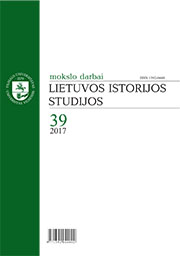URBANIZACIJA 1918–1940 METAIS: MODERNAUS MIESTO ŽENKLAI LIETUVOJE
URBANIZATION (1918–1940): THE SIGNS OF MODERN CITY IN LITHUANIA
Author(s): Giedrė Polkaitė-Petkevičienė, Norbertas ČerniauskasSubject(s): Demography and human biology, Rural and urban sociology, Pre-WW I & WW I (1900 -1919), Interwar Period (1920 - 1939)
Published by: Vilniaus Universiteto Leidykla
Keywords: urbanization; internal migration; modern society;
Summary/Abstract: In this study, the term of urbanization is understood in a broad sense, not only as the concentration of the population in cities or urban planning, but as a process closely linked to modernization and broad social changes during the transition period from agrarian (rural) to industrial (urban) society, which were changing everyday life, social relations and identity forms. The aim of this work – to investigate the processes of internal migration from countryside to the cities and social and cultural consequences of urbanization related to it. The article analyzes the demographic indicators of urban change and municipal policy in the face of growing urbanization. We intended to discover what were the signs of the modern city in general and whether these metropolitan cultural changes were felt in Lithuania.
Journal: Lietuvos istorijos studijos
- Issue Year: 2017
- Issue No: 39
- Page Range: 64-83
- Page Count: 20
- Language: Lithuanian

